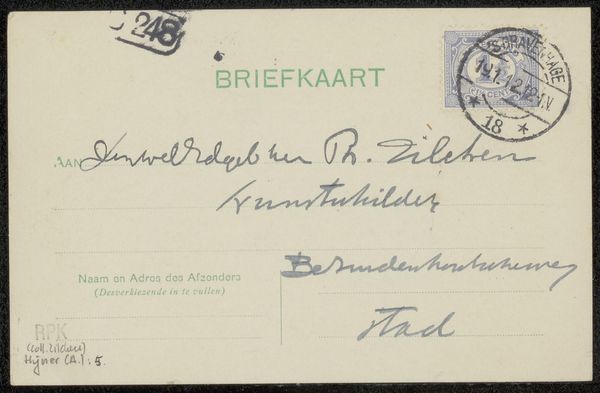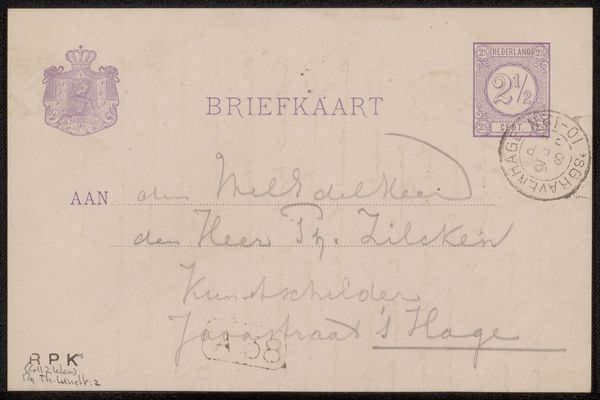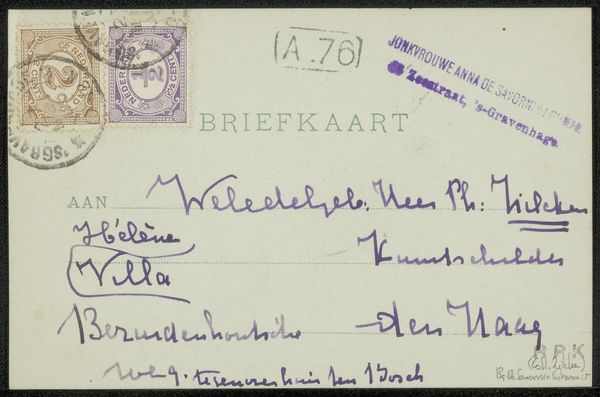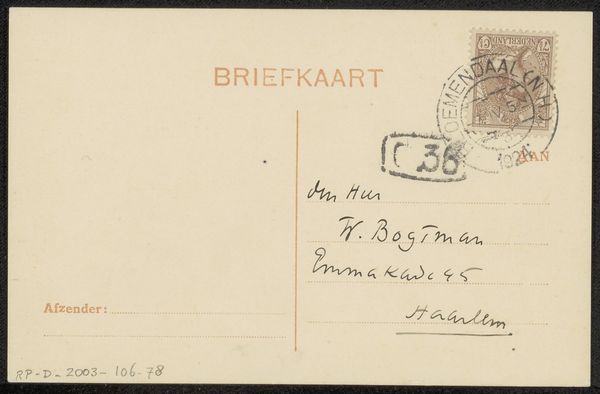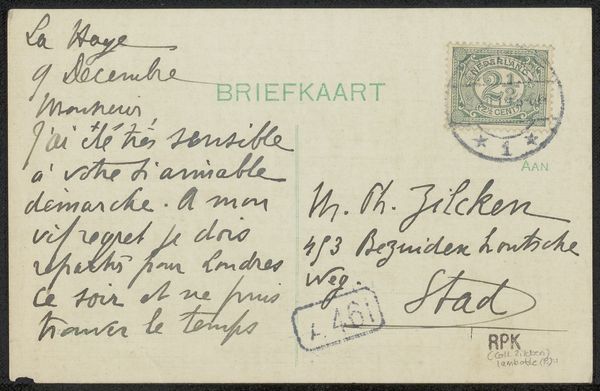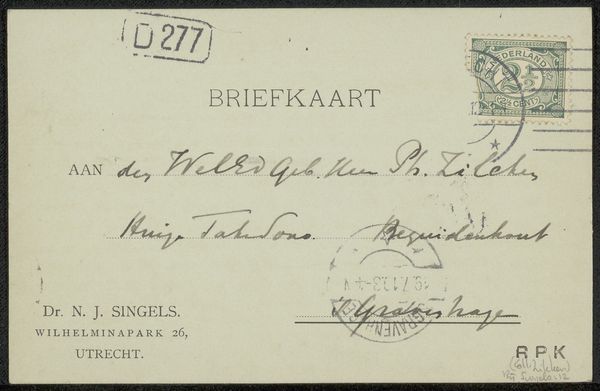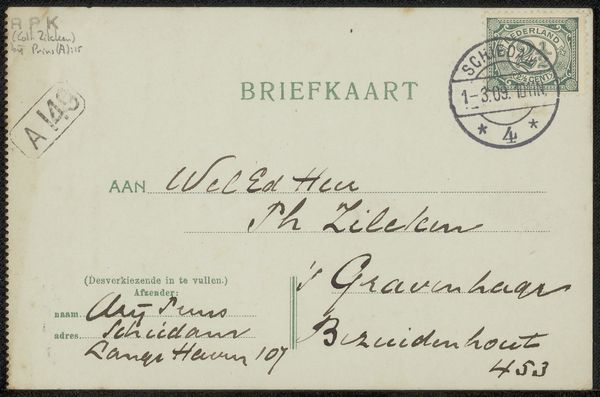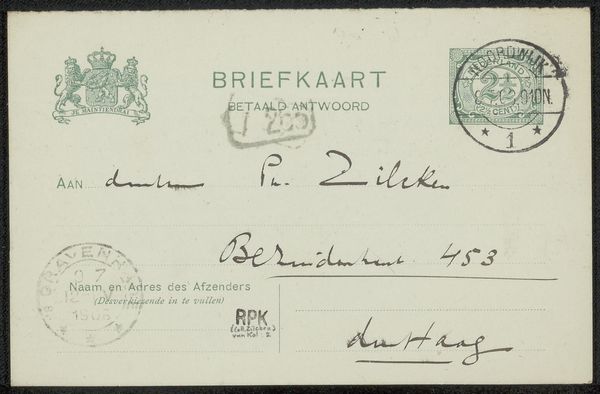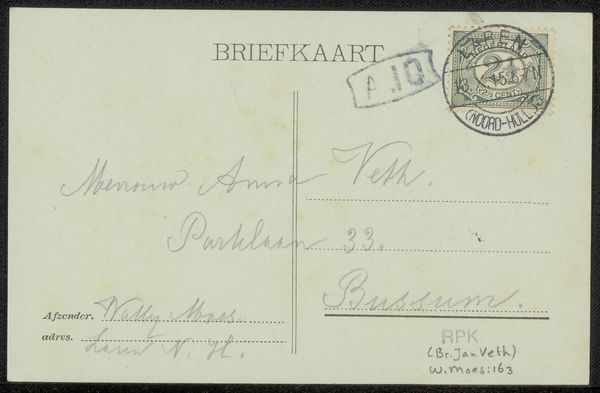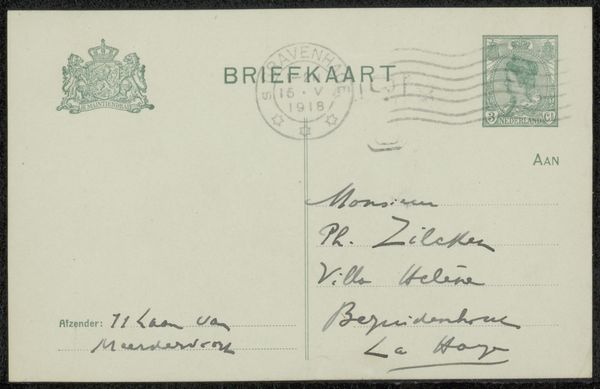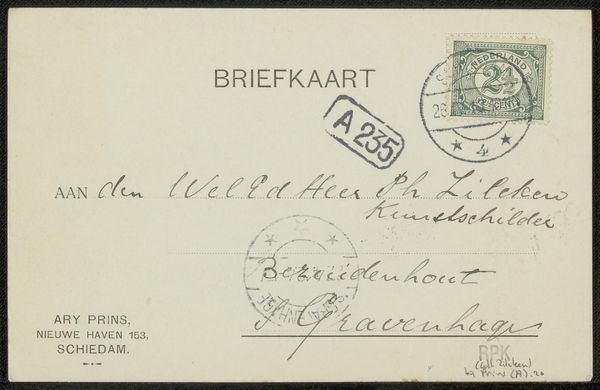
drawing, paper, ink, pencil
#
portrait
#
drawing
#
script typography
#
hand-lettering
#
playful lettering
#
hand drawn type
#
hand lettering
#
paper
#
personal sketchbook
#
ink
#
hand-drawn typeface
#
pencil
#
sketchbook drawing
#
handwritten font
#
small lettering
Copyright: Rijks Museum: Open Domain
Editor: This is a scan of a postcard titled "Briefkaart aan Anna Dorothea Dirks," made before 1915 by Wally Moes. It looks like a simple piece, a quick sketch maybe in ink or pencil on paper, meant for postal service. I'm struck by the hand-written quality. What's your take on it? Curator: As a materialist, I see this piece primarily through the lens of production and distribution. The very existence of a "Briefkaart," pre-printed and ready for postal use, reveals a complex social infrastructure. Consider the paper mill, the printing process, the postal system itself, all enabling this single, seemingly intimate communication. Editor: That's fascinating; I was really just looking at the handwriting and the sketch-like quality. It felt very personal. Curator: But where does that "personal" feeling come from? The handwriting, the choice of words, yes, but also the standardized form *around* the handwriting. This tension between mass-produced object and individual expression is key. Think of the postal worker who handled it, the social context in which correspondence held such value and how such value can be exploited, as Marx would say. Editor: So you're saying that even something that seems so intimate is shaped by broader economic and social forces? Curator: Precisely. Even the materiality – the ink, the paper, the glue on the stamp, these represent resource extraction, labor, and global trade networks. This 'Briefkaart' isn't just a message; it’s a physical manifestation of interconnected systems. We should remember that the art is work done to some material in specific historic, geographic, and social situations. What do you make of the cancellation mark obliterating part of the written note? Editor: That is so interesting; I would have completely missed all of that. I thought it was just a pretty piece of ephemera. It does give a lot more meaning to something so small. Curator: Agreed. Everyday objects like this offer great lessons about what culture values, then and now.
Comments
No comments
Be the first to comment and join the conversation on the ultimate creative platform.

